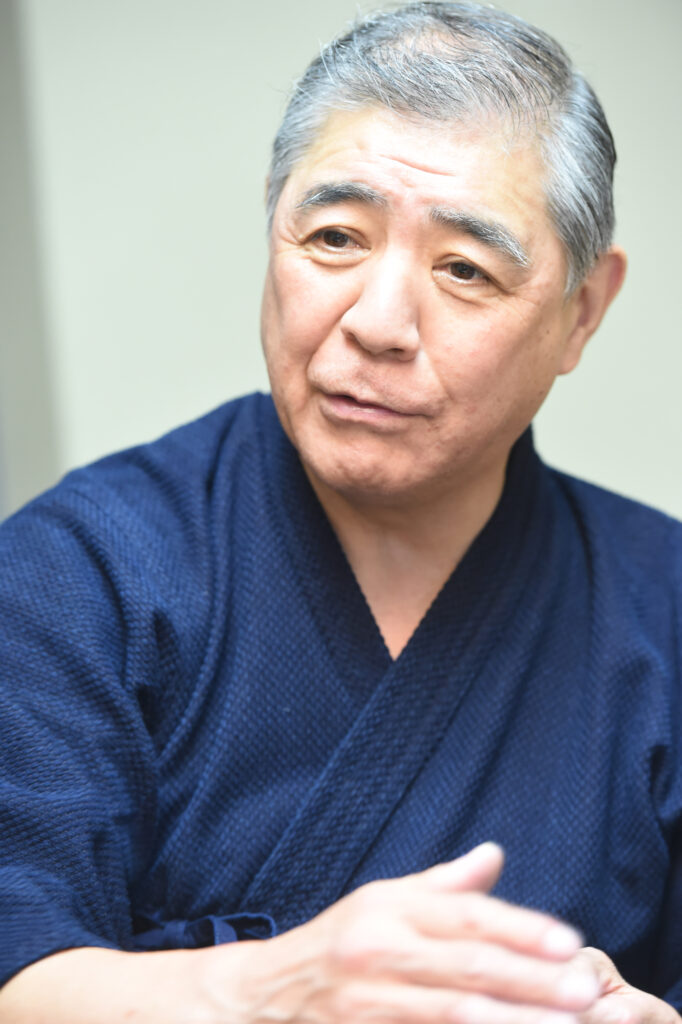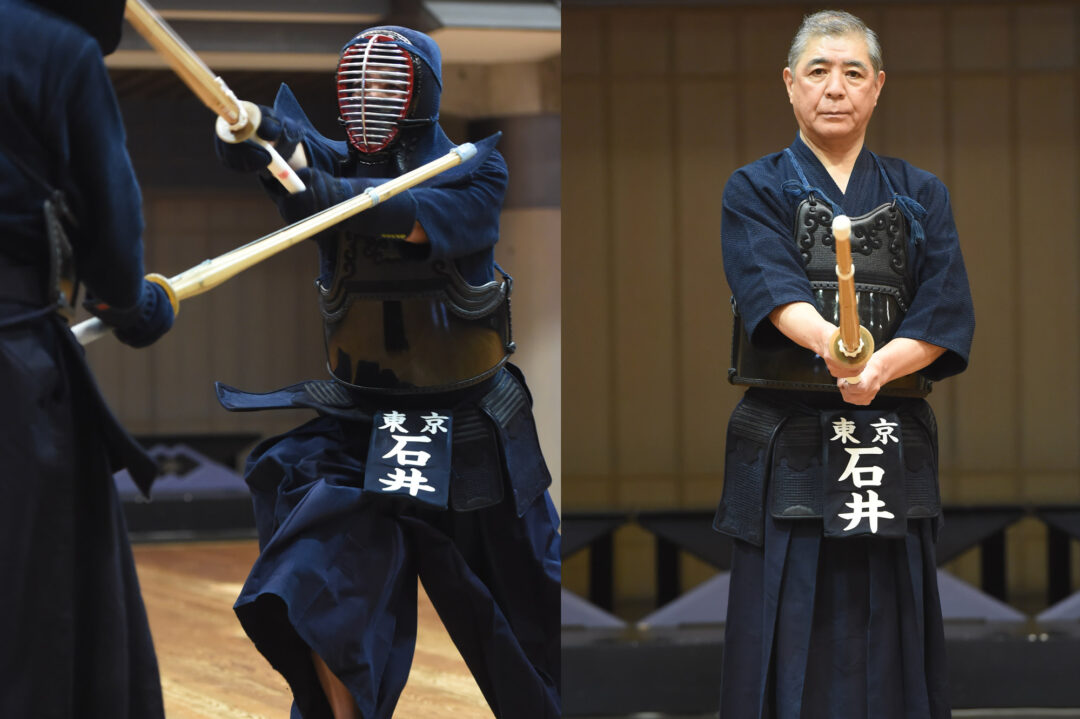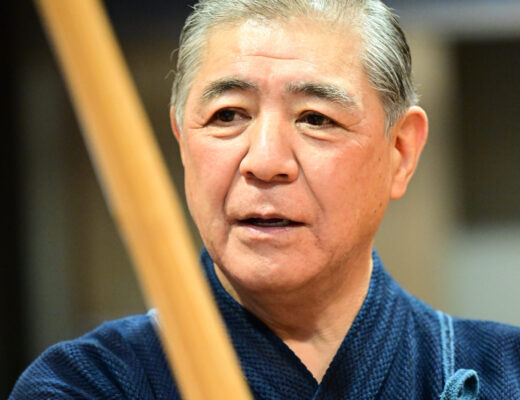KENDOJIDAI 2021.2
The left foot is the striking foot. The most important thing to learn is to strike without repositioning it. Being aware of the left foot in Kendo during body movement, Suburi and Uchikomi, can change the quality of Keiko dramatically. In this article, Ishii Sensei explains what you should focus on.
Ishii Takeshi, 8th Dan Kyoshi

Kendo is about applying Seme to each other using the Shinai as the mode of transfer, and striking when there is an opening. It is well known that striking on a whim is not appreciated, and if you do not learn to win by applying Seme your ability will not improve.
The All Japan Kendo Federation clearly states that the criteria for awarding the dan rank are as follows:
- 3rd Dan is for those who have mastered the basics of Kendo and have a very good skill level. 4th Dan is for those who are in the process of mastering the basics and application of Kendo and have a great skill level.
- 5th Dan is for those who have mastered the basics and application of Kendo and have superb skill level.
- 6th Dan is for those who are in the process of attaining the true meaning of Kendo and have outstanding skill level.
- 7th Dan is for those who have mastered the true meaning of Kendo and have excellent skill level.
As you progress through the Dan grades, you will understand that duelist skills such as disrupting your opponent through Seme, drawing them out, and manipulating them become more important. To put it in the simplest way, when applying Seme to your opponent you need to be able to perform a technique without hesitation when you feel it is the right moment. The key to this technique is the use of the left foot.
If the left foot is not ready to strike, the technique will not meet the criteria for effective strikes. I am currently blessed with the opportunity to instruct Kendo students from young children to general enthusiasts, and I always advise them to do Keiko with the left foot in mind.
In general, the most important part of Kihon-geiko is Men-uchi. The reason why I make it a challenge to get into Issoku Itto No Maai and strike without repositioning the left foot is so that the body learns to be ready to strike at any time. If there is a problem with the Kamae or the way the Shinai is swung, it is possible that the left foot is repositioned before striking. Such a way of striking is difficult to apply in competitive scenarios. Therefore, in Kihon-geiko, it is important to focus on striking without repositioning the left foot.
Dan promotion examinations are held with examinees of similar age. The judges are looking to see what kind of Seme and techniques the candidates will perform as they get into various distances of Maai.
The judges are impressed by the techniques that capture the moment of opportunity in a scenario of impending conflict. In most cases, such techniques are performed when the left foot is stable, the Kamae has no openings, and the opponent is unable to resist. An opportunity to strike is also an opportunity to be struck, these are close calls.
When you are in a situation where the distance between you and the opponent is closing, it is common for you to not be able to get your foot out of the way and only your hand comes out first. This is what happens when you perform a technique using left food insufficiently.
In judging, the feeling of “wanting to hit and not being hit” often prevails, and you end up collapsing before you can break your opponent. In order to avoid such a situation, it is necessary to keep the left foot stable and ready to strike at any time.
There are four types of footwork in Kendo: Fumikomi-ashi Okuri-ashi, Hiraki-ashi and Tsugi-ashi. Tsugi-ashi requires you to reposition the left foot, and it is effective when striking from a long distance. All types of footwork must be mastered, but if you don’t learn to enter Issoku Itto No Maai with Okuri-ashi and from there strike without repositioning the left foot in particular, you will not be able to have flexibility in your choice of techniques.
In Kendo, you need to practise in such a way that body movement, Suburi, Uchikomi-geiko and Ji-geiko are all linearly intertwined, otherwise you will not be able to cultivate the ability that directly relates to the actual performance. One of the points to connect each Keiko with is the left foot, and I would like to introduce a specific Keiko method for that.
The rest of this article is only available for Kendo Jidai International subscribers!



